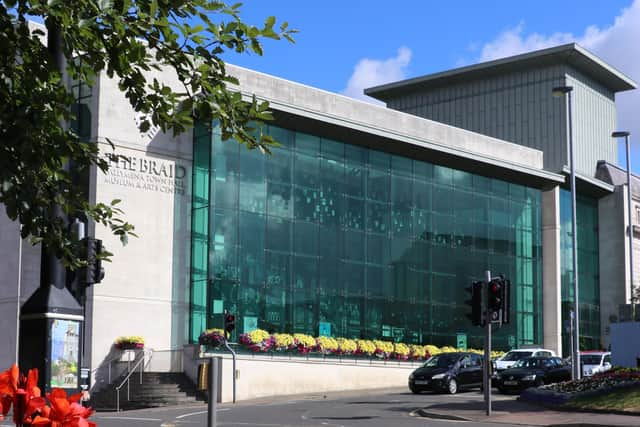Behind closed doors discussions to finalise Mid and East Antrim Borough’s rates
and live on Freeview channel 276
The behind closed doors session was to discuss the revenue budget before the local authority strikes a rate on February 14.
In August, Mid and East Antrim was bracing itself for a potential reduction in rates income by £2.1m due to the end of furlough and rates holiday for businesses.
Advertisement
Advertisement
A report to councillors by the University of Ulster’s Economic Policy Centre at the time indicated that this sum could be the loss incurred by the local authority during the 2022/23 financial year.


Seventy-two per cent of the local authority’s income, which amounts to £50.75m of £70.2m overall, comes from domestic and non-domestic rates payments. Domestic rates bring in approximately £29m and non-domestic, £21.7m.
Last year, councillors agreed increases of less than 1% on both business and household rates with Mid and East.
Mid and East Antrim’s average domestic rates bill last year was £984 per annum with the average business rates bill at £12,006.
Advertisement
Advertisement
Council officers have already stressed a “need to deploy a strategy that reduces reliance on rates and increases other sources of income to ensure future sustainability of services”.
Meanwhile, borrowing by the local authority increased from £62.8m in 2018/19 to £65.6m in 2019/20, according to the Local Government Auditor’s 2021 report
Capital expenditure in Mid and East Antrim doubled from £4m in 2018/19 to £8.1m, in 2019/20. Usable reserves have decreased from £16.2m to £13.8m.
Agency staff costs accounted for one fifth of local authority salary costs, the Local Government Auditor’s report also stated. Mid and East Antrim was second only to Causeway Coast and Glens whose agency bill accounts for one third of staffing costs.
Advertisement
Advertisement
However, Mid and East Antrim councillors have been told by officers that the authority is in “a healthy financial position” despite the Covid pandemic.
Local Government Auditor Collette Kane says that she has “continued to recommend that progress needs to be made to permanently fill posts in councils affected”.
“Whilst I recognise that there will always be a need for agency staff to cover temporary posts and absences, during my financial audits I noted with concern the continued reliance on agency staff in two councils during 2019/20.
“In Mid and East Antrim, agency staff accounted for over 20 per cent of total salary costs.”
Advertisement
Advertisement
In 2020, 212 Mid and East Antrim Council staff were placed on furlough due to the Covid pandemic.
The local authority said that it was able to save £75,000 per week by furloughing staff.
The auditor also stated that “usable reserves” play an important role in councils’ financial management.
Mid and East Antrim’s dropped from £16.2m to £13.8m. By comparison, Antrim and Newtownabbey‘s fell from £12.3m to £10.1m and Ards and North Down, from £10.4m to £9m.
Advertisement
Advertisement
The auditor stated: “Usable reserves should be managed carefully and will be an important resources as councils recover from the financial impact of Covid-19. Councils should have a clear plan setting out how these resources will be used.”
Michelle Weir, Local Democracy Reporter